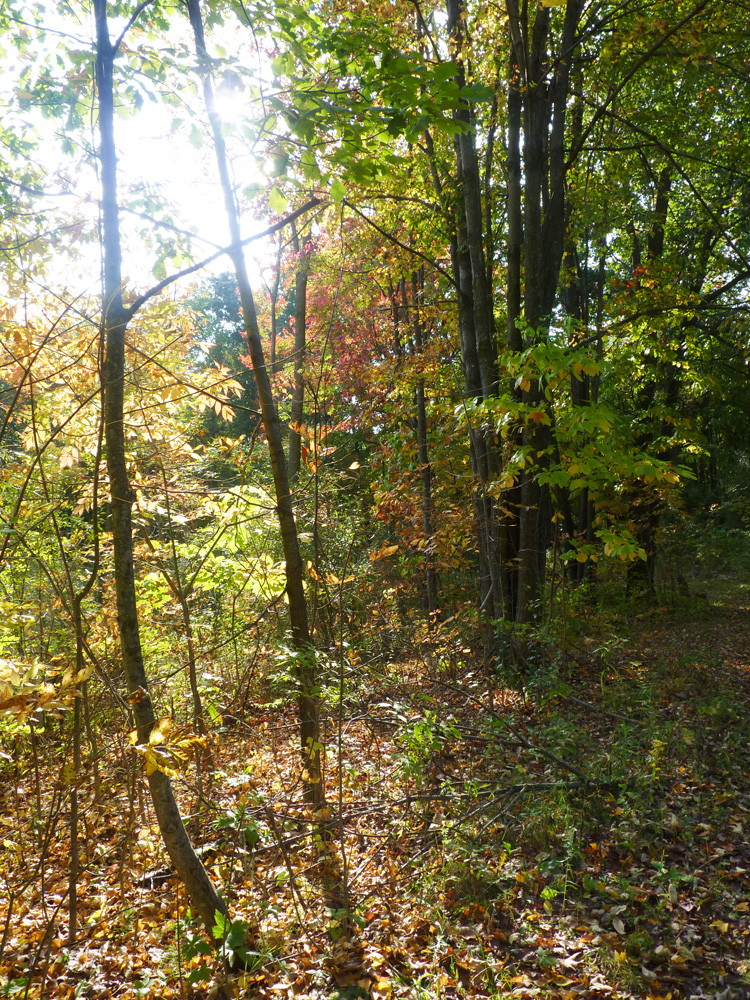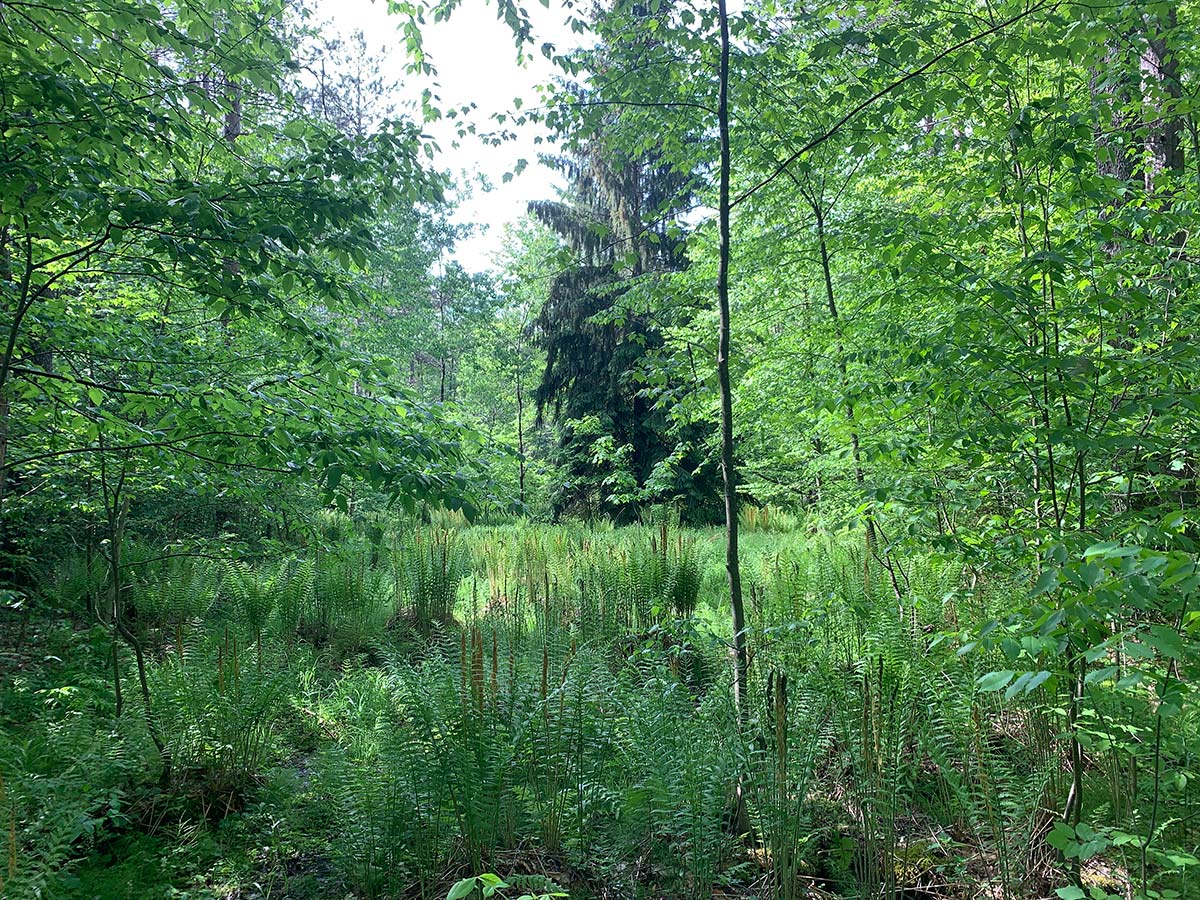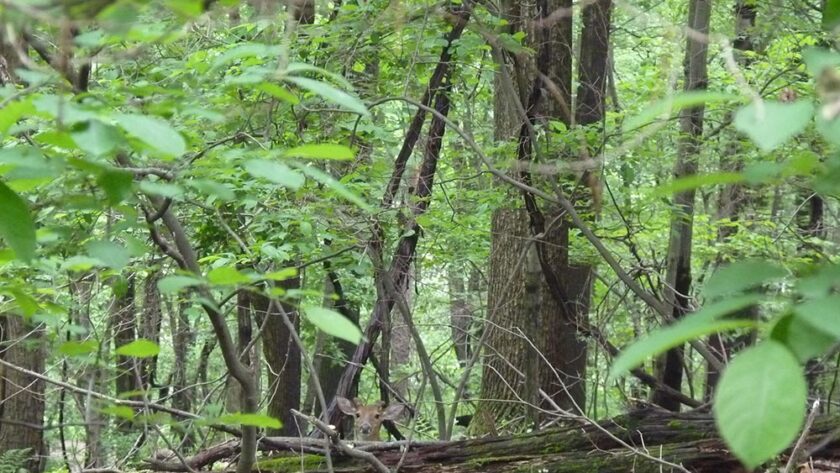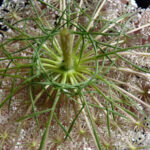
When you think of the term “wild”, what comes to mind? Perhaps wild can be defined by that which is its opposite: civilized, tame, domesticated, and controlled. Wild, on the other hand, is free, unrestricted, unbounded, and sovereign. And while I resist binaries, there does seem to be some truth in the difference between that which is wild and that which is tame–a manicured city street vs. an old-growth forest has a world of difference: in the smell, in the biodiversity present, and in the energy of the space. A wild place is hugely biodiverse and serves the needs of a wide variety of species. A wild space is in a place of ecological balance, where all resources are cycled and used. The human-tamed spaces are most frequently designed for human needs exclusively, and in the modern age, are also prime producers of pollution and waste. There’s, of course, also a lot of spaces in between. What happens when we embrace some of this wildness and wilderness in our own lives? What can happen when we bring it back into our lives–both internally and externally–and allow nature to offer her wisdom?
Lughnasadh is a great time for this kind of work, here in the Northern Hemisphere, because this is a time when many of the plants and life are at their “peak” for the year. This is when the seed heads ripen, the fruits of the forest grow extremely abundant, and this is a time when the land is at its fullest and greenest of the year. In other words, if you want to embrace the wilds, starting at the peak time is a great time to do so.
Why embrace the wilds?
Embracing the wilds both within and without is important work in a few directions: the first is from a standpoint of global sustainability. Here in the US, over 80% of our population lives in urban areas–areas that are, essentially, the most catered to human needs, and when nature takes place in them, nature is tamed, shaped, and molded mostly to human needs. When nature is encountered, it is typically tamed and shaped, with only certain kinds of nature able to thrive (or adapt) in these settings. Take the lovely trees planted in lines on the edge of your street, or the carefully manicured lawns of suburbia. A lot of the most destructive practices currently that everyday people do are in the name of taming nature–spraying the weeds, mowing the grass, or otherwise preventing nature from “taking over.”While climate change is certainly one of the most dominant forces shaping the 6th mass extinction globally, it is also the loss of habitat–the conversion of wild spaces to human-centered domestic ones–that is also a leading factor. So thinking about allowing for more wild spaces, even in human-centered ones, is one way to help reverse the present course.

But there is a massive mindset component to not having the experience of wild spaces and wild nature close by or by being surrounded constantly by human-driven spaces. If 80% of the population of the US, and 50% of the population globally live in cities–more and more people in the world are experiencing almost no wild spaces on a daily basis. What happens, I believe, is that when we live in these spaces, we start to think that they are somehow “natural” because that’s always what we see. Think about lawns or carefully manicured streets–if you grew up seeing these every day, then that is “normalized” in your mind and that’s what you start to expect. In English, we can see that bias in our language away from undomesticated spaces in phrases like, “that yard is overgrown” or “too many weeds” or a wild space looks “unkempt” and even “yard waste”! This really does a number on our minds: it turns us away from nature and her healing wisdom and makes us privilege and believe (even subconsciously) that human-dominated spaces are what is normal or right. I think it could be time for a powerful shift in thinking!
So…enter rewilding and embracing the wilds. Creating space for wild spaces, untended spaces, and an untended and undomesticated way of thinking can greatly support any nature-based spiritual practice. So rather than sharing rituals for Lughnasadh, I’m sharing a set of practices you might do to bring some rewilding into your life!
Rewilding Nature and Rewilding Ourselves
This section offers some background on the ideas presented and also offers some basic definitions for the principle of rewilding. If you want to get right to the practices, go to the section below!

While definitions vary, the basic practices and assumptions of rewilding in nature is a particular approach to ecological conservation that recognizes that nature can take care of itself and works to reduce human control over land. That is, if an ecosystem is whole and functional, it is self-sustaining and does not require extensive human management (particularly “modern” management techniques which are often thinly veiled attempts at resource extraction, such as the “forest management” techniques we have here in the Allegheny mountains). Thus, rewilding techniques often include things like re-introducing apex predators (see this video on re-introducing Wolves to Yellowstone for a nice example of how this works), migration corridors, removing damns, and limiting human “management” techniques (especially as many of these are rooted not in care but profit). The whole premise re-frames nature as the one that has the ultimate wisdom about how to best thrive, and that natural spaces can be at their utmost health if they are allowed to be wild. Here in the US, the idea of rewilding is only starting to take off, but it’s much more prevalent in Europe and other places where much more of the landmass is taken up by people (for example, in the UK, only 13% of the landmass is forest, where here in the US about 33% is forested. Rewilding has a few principles worth sharing. Here in the US, there are still lots of wild places you can get lost in–forests, deserts, national reserved, BLM lands, and the like.
One of the questions you might ask is, but what about other techniques like permaculture, organic gardening, etc? There is ample is room for both. Rewilding land management practices suggest that while much of our lands can be left to simply be wild, we are still in need of regenerative practices for how we live in our everyday spaces–our homes, our cities, our agricultural practices, etc. And it is in these human-dominated spaces that is where things like permauclture apply–they apply to the 1/2 acre garden, they apply to the city park, and they certainly apply to the suburban lawn. Permaculture also uses rewilding concepts–a perennial food forest is a wilder space that is planted and then managed primarily through harvest. I see both rewilding and permaculture as equally important in helping shape a balanced approach to life in the present and future.
Many folks who are into rewilding also recognize that this same practice can be applied to people. Modern civilization breeds a host of diseases of the body and mind that are products of the tight control of domestication: apathy, depression, feeling that life has no meaning, anxiety, fear, violence towards self and others, and obesity, to name a few. Civilization may have many benefits, but ultimately, we are just another animal on this planet, and much more of our evolution was spent living like another animal working with nature to provide our needs than living as the modern-day demands–disconnected from the living earth. In fact, culture sends this message strongly: that you are not whole, that you are not right as you are, but rather, you can only be fixed by this pharmaceutical, or product, or specialist service. The principle of rewilding suggests that everything you need for wholeness can be found in nature, and by experiencing nature closer and becoming more aligned with the wild parts of nature, you can heal yourself. It is beautifully aligned with nature spirituality and can take practices like druidry in some really fantastic directions. While there are varying degrees of personal rewilding practices, I’ll share a few here.
Enter the Wilds
The most basic rewilding practice you can do is simply to go into wild places and spend time there. In most places, there are different kinds of wild spaces, and learning about your local region can help you select spaces that are wilder to spend time in. Here in Pennsylvania, for example, we have different kinds of public lands that are managed in different ways. State parks are usually highly managed, state forests less so, and wilderness areas being the least of all managed. Pennsylvania currently has eighteen areas designated “Wilderness” areas that have no land management (detailed here). I’ve done overnight trips in three of these areas and they are so different in character than more managed spaces.
If you haven’t spent a lot of time in more wild spaces before, you might work yourself up to that. Start with camping in a campground, and then shift to more primitive camping where you bring your backpack and more minimal supplies. Find friends who have gear or are experienced in doing this. You can even work yourself up to more primitive camping once you’ve built up the skillset where you forage for food, build basic shelters, etc. The point here is to experience more of nature and less of the domestic spaces that dominate our lives.
So what do you do when you enter these wild spaces? The nice thing about them is that you’ll rarely encounter any other people if you’ve chosen carefully. My suggestion is to just be wild. Let loose. Be undomesticated. Have a joyful and fun time. Commune with nature. Recognize that you are part of nature–and experience that joy. And see the next section for more “wild” practices you can embrace.
Allowing Yourself to Be Wild
Spending some time in a wild and undomesticated state means throwing off the trappings of civilization and simply living in the moment. This kind of thing is best done in a wild space, but you can do it in a private setting of any kind (even a private backyard!). Let your inhibitions go–you can literally ritualize this where you envision yourself removing your inhibitions and behavioral norms and becoming free.
Swim naked in the stream. Paint yourself with berries and clay. Run naked in the rain and laugh as it hits your cheeks. Take off your shoes and climb on the rocks. Listen to the sound of the birds and call them in response. Pay attention to the movement of the animals and see if you can move like they do. Explore. Talk with the stones. Eat wild foods (those that you know, of course). Lay under the sun. Get dirty and muddy. Create a completely free and unstructured experience for yourself where you are deeply engaging with your senses and simply engaging in play. Spent time just moving–feel your body, be in your body. Run with the wind, jump, dance, sing as loud as you can, and just feel yourself being free.

A major change that can facilitate this wild state is removing footwear: try going barefoot or go with a pair of homemade moccasins. This past year, I’ve been wearing moccasins with increasing frequency to really feel the earth beneath my feet or going barefoot. If you want to go the moccasin route highly recommend the patterns from Earthing Moccasins –they are affordable and will protect your feet but still allow you to experience nature.
Also, turn your phone off or leave it at home. Don’t document your experience–simply live it. Live in the moment. This is a liberating ritual for yourself and doesn’t need to be documented and shared on social media. Put away the trappings of technology and simply be a primate living in nature!
If you notice, all of my suggestions above are embodied ones. Modern culture tries to disconnect us from our bodies through technology, long sedentary office jobs, and a whole set of expectations that keep us acting and thinking like everyone else. Remove those trappings as much as you are able to. Finding a way back into your senses, your body, and your status as part of nature can be so incredibly rich and healthful.
Rewilding the Mind
Rewilding is as much about inner change as it is about outer change. We can find ways of being more wild and free in part by changing our mindsets towards our daily life. It can be a good time to reflect on your own life–how can you bring a bit more nature, freedom, creativity, and wildness in? There is so much inner work that you can do on these topics, here are just a few ideas to get you started
- Recognizing the personhood and sovereignty of all living beings
- Learning to trust your intuition and your own inner knowing rather than paying attention to what external voices/society tells you
- Exploring and extending your relationship with nature in many different ways
- Exploring your subconscious through creative practices, dreams, and meditation
- Exploring and changing how language shapes our thoughts (and interrogating words like progress, growth, wild, unkempt, etc)
- Exploring and changing how we view wild and domestic spaces
For more in this line of thinking, you might want to see the online course “Surviving Civilization” by Rewild University, which helps you find ways of rewilding your life and thriving in a challenging time.
Perhaps this isn’t my typical “ritual” post for a holiday, but I think that we can expand and broaden our notions of nature spirituality by simply experiencing different ways of integrating ourselves back with the living earth. I would love to hear more from you–how have you rewilded your life? Have you participated in any rewilding projects? What benefits have you had from doing so?




May you have a Blessed and Merry Lughnasadh!
Blessings to you too, Morgan!
Reblogged this on Paths I Walk.
Thank you, Paula! Blessings of Lughnasadh upon you!
Hi Dana, another great article. I’m really enjoying your work. As I was on holiday the first half of the month I neglected to send out our magazine publication “Omni Vision” which featured your article, “Intro to Sacred Gardening.” Here’s the link to the magazine it’s free. https://www.theomnifoundation.com/single-post/omni-vision-issue-9
I would love to use this article in our next issue, out October 1, if you will permit.
Thanks for sharing your spirit! <3
Hi Leah Kirrane,
Sure, feel free to use the article–just credit me and link back to my blog :). Thank you so much!
Great spirit kinda has his wayxxx
Indeed, Gordana! :). Blessings to you!
I’m lucky to live in a state high in forests. Wolves have reintroduced themselves to our state this past year and a couple raised a litter of 6 pups to get the ball rolling. They showed up after the state voted to reintroduce wolves in the wild here, and these wolves responded to the call before an organized human-assisted effort could begin. That seems right. My own life has been focused on eliminating processed and non-organic foods and growing my own organic fruits and vegetables. This is hardly wild, but is a step away from the status quo. Living in suburbia and working in the city, we are trying to change our thinking more than anything. Thanks for the thoughtful article.
Hi KDKH, it sounds like you live in a wonderful place. I think the key to any of this work is small, slow steps. Eliminating processed food, growing your own food, etc, is all a wonderful start to these practices! Blessings to you :).
In the UK there’s been an upsurge in leaving municipal areas, road verges and private gardens unmown for wild flowers and pollinators. The more it happens, the more other people feel ‘allowed’. And of course it’s easier- less work for busy people, less expense for local councils! A shift in mindset from ‘what will the neighbours think? I’ll be accused of spreading my weeds’ because it is broadly understood now that this has a purpose, that it’s not ‘laziness’. This has been helped by campaigns on popular TV, but I reckon anyone could start this off in their neighbourhood with a little sign ‘I’ve left my lawn for the bees!’ – whilst there will doubtless be mutterers, there will be others who’ll jump on board as it’s less than no effort to do so- it actually saves effort. It lifts my heart to see, because whilst some of the municipal rewilded areas are clearly planned, others are personal, like one up the road from me, where the council worker with the mower has spotted a patch of flowering fox-and-cubs and some tiny stag horn sumac saplings which have seeded themselves, and has decided to go round them like an island
Hi Nicola,
That’s amazing! I don’t think we are anywhere near that in the US, at least in the region where I live. I’m so happy to hear that the UK is more open to rewilding. It’s a tough battle out here where the lawn still has SO much power and hold over people (and laws)! I hope that we here in the US can get our act together soon enough!
This is an extremely well thought and articulated article. I have been fortunate to live most of my life in the country in Canada. I am in the most populous region, about an hour from Toronto, so there is a lot more human dominated space than some other parts of our country. Society trappings can be so intense there is still the mindset of the perfectly manicured lawns. That goes right up to local government level where property owners can be fined if their grass is over 15 centimeters. I do have a back small corner of my lot which I have rewilded. So far no complaints.

Fortunately there are forests nearby within a couple of kilometers away. I walk there and spent time each day in there. Such beauty and diversity to be found there. Thank you for sharing.
Hi Canuck Carl,
With rewilding that’s always the challenge–how do we not only create wild spaces for life (even in urban/suburban areas) but also do so while not angering our neighbors (because often for the law to be invoked, it only takes one complaint from a neighbor). It seems like a delicate balance–I hope at some point the tides will shift!
I was actually just in Michigan this week. I had hoped to visit a friend in Canada near where you are but the borders are still closed. I spent some time at Lake Huron and it was amazing!
You are exactly correct, Dana. Just one complaint is all it takes. That is so cool you were up close by. I’m fairly near Georgian Bay, which is part of Lake Huron on the Canadian side.
I struggle with this because I live close to the city on a small lot. I chose this place because I wanted to give up my car and be able to bike and take public transit. But now I want more wildness in my life and it seems impossible. My tiny front yard is an edible and pollinator garden but I struggle against perennial weeds like bittersweet and black swallowwort because they thrive in this urban environment.
In your Sacred Actions book and permaculture, there is the concept of zones. I wonder if there is even room for a Zone 5 in a tiny backyard (mine is about 1000 sq ft)?
I try to live my beliefs. I visit parks near my house, sit near the stream and listen for the birds amidst the traffic, but I can smell the sewage from the recent rainstorm. I pick up trash and hypodermic needles. It makes my heart ache.
I want to move somewhere more wild, but lately I’ve been thinking about the other side of this: people living on the wilderness-urban interface. It leads to road building, more driving, and fire suppression. I think many people feel a deep urge to move away from urban areas because they want more nature in their lives, but is this always better for the environment?
Hi Robin,
Thanks for sharing. I do think this is a real challenge for everyone–the more people that are around, the more space they take up and the less space there is for wild growth and life. But also, the more their expectations of what “tended” land looks like–for example, I’ve run up against so many ordinances and issues with neighbors. I have a friend now who is doing serious rewilding and she’s literally been threatened by her neighbors because they think her home and yard are unkempt. This is a long-term battle…how to rewild even our cities, but also shift what “land care” and “lawn care” look like. If you take a look at my Instagram, I just posted a front-yard garden my friend has created. She’s more in a suburban area but there are some small wild spaces. In Sacred Actions, I bring this idea of “growing where you are planted.” And I wonder if that applies to you and your situation–grow where you are planted now, and maybe in time, less city living and more wild living will call to you. But in the meantime, think about how you can create positive change right where you are!
As someone who currently lives in a rural area in Western PA, I find that most people in cities are actually more environmentally conscious. The idea of environmental action out here is very rare, and most of my conservative neighbors have very little respect for life (e.g. shooting birds, cats, dumping poisons on the land). It is so heartbreaking and there is literally no space for conversation. I don’t know how it is in other parts of the US, but here, there is an appalling disregard for life and nature. So even in the country where there we have lots of wildlife and wild spaces, there are serious problems. So, here on our 5 acres, we are a refugia among a sea of chemicals, over-harvested forests, and poisoned fields….
What I think overall is that we need considerable shifts in mindset towards nature, regardless of rural, urban, or suburban, here in the US.
Blessings to you,
Dana